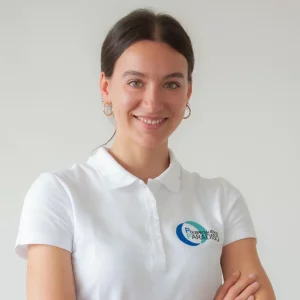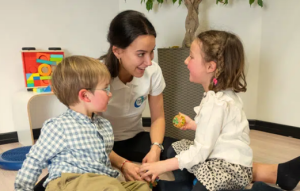The Vivaio Model (MOVI) is not just a theoretical framework, but a true clinical tool that uniquely integrates emotions, relationships, and activities to promote health and well-being. Developed in Italy, this model has become a key reference for psychodynamic occupational therapy, offering a deep and personalized perspective.
What is the Vivaio Model (MOVI)?
The MOVI is a relationship-based, psychodynamically oriented occupational therapy model. Unlike more traditional approaches, MOVI focuses on recognizing and managing emotions that emerge during “doing” within the therapeutic relationship.
Its distinctive features include:
- Centrality of emotions: Emotions are seen as an integral part of the healing process, not as an obstacle.
- Dynamic relationship: The connection between therapist, patient, and activity is not just a background element, but the driving force of therapeutic change.
- Role of the therapist: MOVI explicitly defines the therapist’s role as creating a safe and stimulating environment that encourages the patient’s authentic expression.
- Activity choice: Activities are selected based on the patient’s sensations and emotions, making the therapeutic journey more meaningful and authentic.
This emphasis on the therapeutic relationship in occupational therapy and the emotional dimension of occupations makes MOVI a unique and valuable model.
Origins and Development of the Model
MOVI was developed in Milan, within the “Il Vivaio” center. It was created by three occupational therapists: Julie Cunningham, Carolina de Sena Gibertoni, and Elisabeth de Verdière Crespi. Their initial question was: “How can we integrate emotions into the occupational therapy process without losing sight of the occupational goals?”
Drawing inspiration from psychodynamic approaches, they developed a pathway of reflection and clinical practice that, around the year 2000, took theoretical shape, becoming the first conceptual occupational therapy model developed in Italy.
Who is MOVI for: Areas of Application
The Vivaio Model can be applied broadly, especially in contexts where the emotional and relational dimension is crucial for occupational participation:
- Occupational therapy in psychiatry: Particularly beneficial for patients with mood disorders, schizophrenia, and personality disorders, MOVI supports awareness and social reintegration processes.
- Psychosomatic disorders: Helps patients recognize and process emotions expressed through the body.
- Occupational therapy for chronic disabilities: Activity selection based on emotions helps rebuild identity and motivation in patients with long-term conditions.
- Pediatric and adolescent care: Uses play and creative activities as privileged channels for emotional expression in children and adolescents with relational or behavioral difficulties.
- Complex rehabilitation: Integrates functional rehabilitation with work on personal meaning and the emotional impact of illness (e.g., post-trauma, neurological diseases).
The Ultimate Goal: Promoting Health and Well-being
The primary goal of MOVI is to promote health and well-being through the recognition, processing, and transformation of emotions that arise in “doing together.” It goes beyond skill development, aiming for a deep change that integrates emotional, relational, and occupational dimensions.
Thanks to this approach, patients can rediscover a sense of continuity, identity, and active participation in their daily lives.
Book an initial consultation to discover how occupational therapy can help you. Our occupational therapists specialize in the Vivaio Model (MOVI) and will design a personalized program tailored to you. Contact us now!


